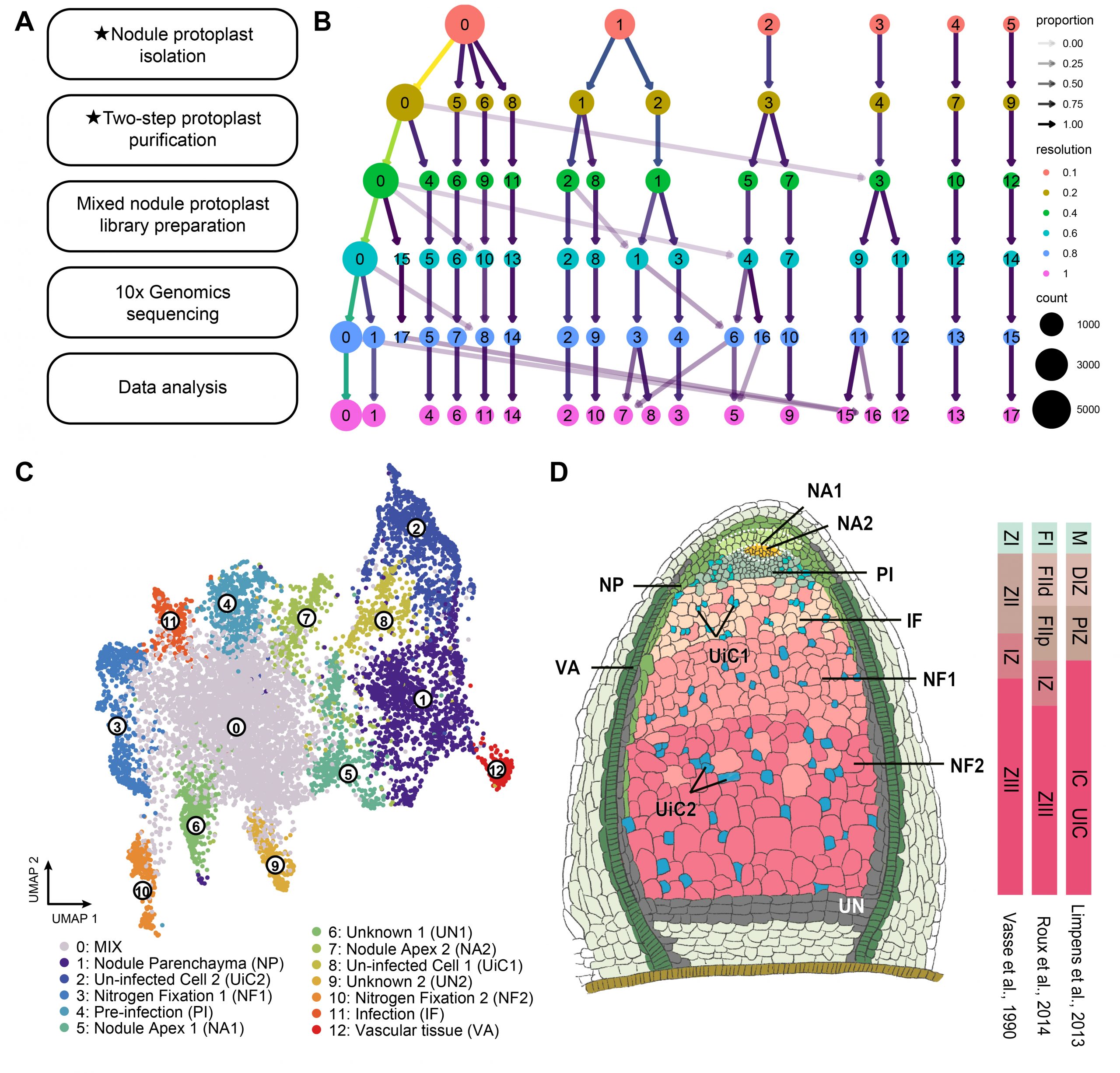The root nodule is a complexed symbiotic nitrogen fixation factory, in which cells are highly heterogeneous. However, the differentiation and interconnection of nodule cells are still largely unknown. Here, we set up a modified protocol for nodule protoplast preparation and report on a single-cell RNA sequencing assay of the indeterminate nodule type represented by Medicago truncatula. We designated 13 cell clusters with specific expression patterns in 14-dpi (days post inoculation) nodules and described a spatial and functional cellular map by experimental and bioinformatic methods. Pseudotime analysis revealed that two groups of apical meristematic cells develop into symbiotic and un-symbiotic fate cells along their particular trajectories. Biofunction analysis of each cell cluster revealed their particularity and interrelation, especially that the un-infected cells in nitrogen fixation zone are involved in nitrogen assimilation as well by undertaking the asparagine synthesis pathway. Our results offer an important resource for investigating the mechanism of nodule organogenesis and symbiotic nitrogen fixation.
